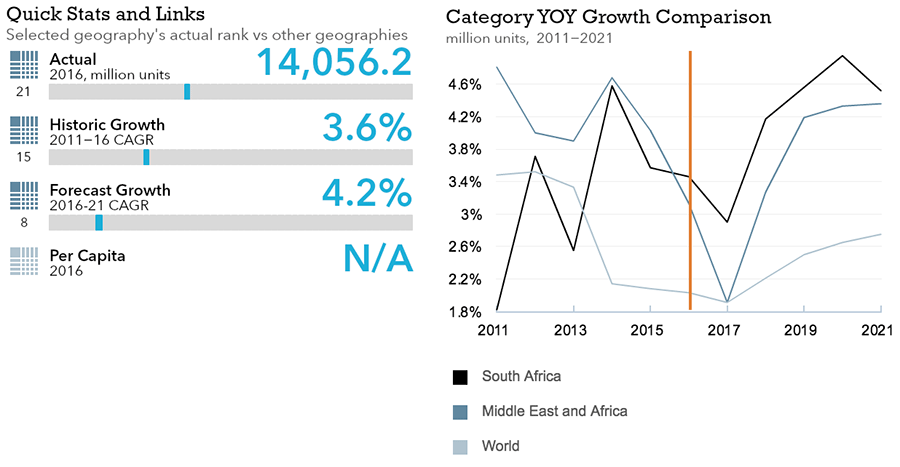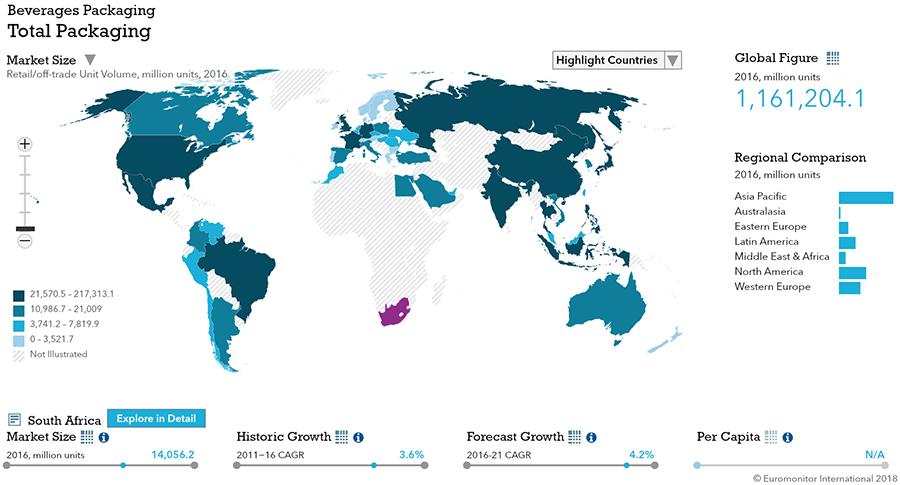Flexible Packaging Landscape

- Total South African beverage packaging volume is expected to see strong 3.8% CAGR growth through 2021.
- Flexible beverage packaging is expected to see slower growth than overall beverage packaging through 2020 before declining in 2021.
Trends
- In soft drinks, PET bottles is the leading packaging type, due in large part to the low cost of recycled PET. Smaller pack sizes continued to be used as a tool for premiumization in soft drinks in 2016. Prominent examples of this trend included the increasing popularity of 275ml glass bottles in carbonates, and the growing adoption of 200ml “slim” metal beverage cans in juice-based carbonates and energy drinks.
- In hot drinks, packaging volume sales grew by 8% in 2016, led by aluminum/plastic pouches for instant tea and fresh coffee beans.
- In alcoholic drinks, glass bottles continued to dominate the category with 82% volume share in 2016, but paper-based containers posted the highest volume sales growth rate at 14%, driven by increasing demand for bag-in-box wine, which consumers increasingly view as providing good value for money.
Outlook
- In soft drinks, PET bottles will remain the leading packaging type through 2021 due to their affordability and will likely continue to erode share from glass bottles.
- In hot drinks, folding cartons are projected to record strong volume sales growth at a 7% CAGR through 2021 as new players enter the market.
- In alcoholic drinks, glass bottles will continue to dominate across the forecast period, and paper-based containers are projected to continue to post volume sales growth, driven by increasing demand for bag-in-box wine from lower-income consumers and greater demand from private label companies.
Disclaimer
This database attempts to compile data from numerous sources. Users should be aware that because different sources are used, there could be errors or omissions. The user accepts that the information is only intended to be an initial reference. The user understands that there is no assurance that this reference material is error free, and that no one involved in compiling or distributing this reference material shall be liable for any damages arising out of its use. Commercially important information should be rechecked and verified with knowledgeable parties in the country of interest.

